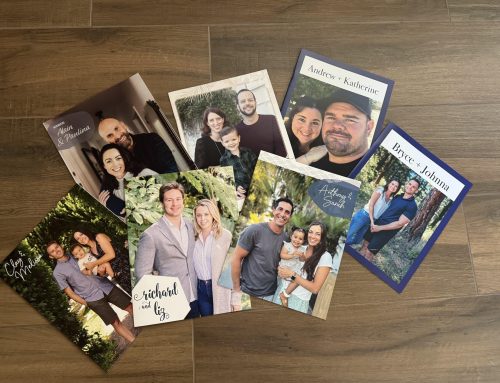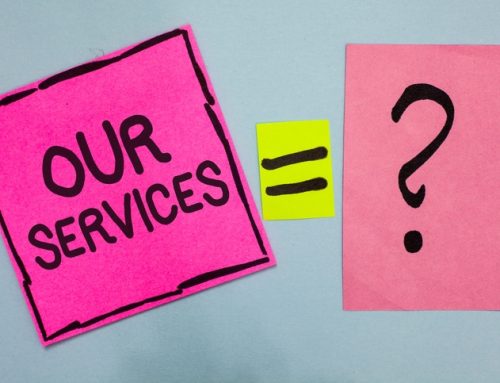
Ashley is a momma to her virtual twins, daughter’s Eden and Shiloh. As a former Purl family and previous blog contributor, Ashley is honored to return with post-adoption communication suggestions. Though most days she is a stay-at-home momma, she contributes at Ataraxis Counseling LLC, where she supports women and mothers as a mental health therapist. You can follow along at Ataraxis_Counseling on IG, or at ataraxiscounseling.com.
After an adoption, the frequency of communication or openness in your child’s adoption could allow for an increased desire to share videos, pictures and/or your child’s milestones with your child’s birth family. Perhaps you and the birth family have decided not to share phone numbers or email addresses for privacy purposes or other reasons. It can also be beneficial to use specific applications or websites for individuals like your child’s birth mother to utilize during a time she chooses, rather than receive a text message during a time she feels unable to emotionally process. Notifications or reminders of the adoption may not be preferred as a text message or email so that is why these other avenues can be resourceful, as they are utilized during times the individual chooses to use the application or visit the network. There are many communication methods that can positively include birth family in your child’s life as he or she grows up; as well as even nurture the relationship between you and your child’s birth parent(s). Here are some recommended applications and a brief description of their services for how they could serve post-adoption communication:
1.) Private Social Networks:
These are free, private social networks for photo and video sharing. This service allows parents to save photos, videos, developmental measurements and stories of their children to a digital journal and privately share those updates with other family members or specified friends. GooglePhotos and Facebook allow for unlimited photo and video sharing (GooglePhotos does have a video limitation) and these accounts can be made private (except cover and profile photo) so that only invited individuals are able to view the posts. On 23snaps, you can invite family members to receive updates by email so that they don’t even have to visit the site. Here is a list of these free and private social networks:
23snaps // GooglePhotos // Create a Private Facebook Account just for the birth family or specified friends to view.
2.) Photo and Video Album Sharing Applications
These downloadable applications provide individuals with one safe space to capture and share their children’s life stories with specific family members or those who are specifically invited to view the photos. Applications like “Tinybeans” are completely private. Until you invite family and friends to become part of your Tinybeans Album, no-one else can ever see your photos. There are many different downloadable applications that allow for this kind of sharing. On many of the free applications, there is a storage and video limitation until Premium is purchased. On applications like Kik and Marco Polo, you are able to send video chats to the person you are talking with. It serves like a digital “walkie-talkie” where you can send live voicemails to a person’s phone number. Examples of these are:
Tinybeans// FamilyAlbum//LifeCake//DropBox
Photocircle// MarcoPolo// Kik App// (these three applications allow for real-time photo sharing and video chatting with invited individuals).
3. Adoption Specific Platforms
These are adoption specific networks that are built with confidentiality, unlimited access and calendar reminders. Sites like AdoptConnect, actually send adoptive families reminders for when photo updates are “due,” and allow families to maintain contact despite lost phones or changed addresses. Birthdays or special occasions are built into the online calendar, and birth families are sent email notifications when photos or videos are posted to the AdoptConnect Timeline. ChildConnect is also an online database that provides a safe, confidential and secure online place to save and share memories. ChildConnect generates “Lifebooks”, which are available online and in print.
I hope that this listing of the most popular communication avenues was helpful! It can be overwhelming in this digital age to learn new tools for communicating. Regardless, technology certainly opens up more possibilities for communication. Feel free to comment and share your favorite sites and applications for communicating with birth family. We’d love to hear your favorite methods of communicating!

Ashley is a momma to her virtual twins, daughter’s Eden and Shiloh. As a former Purl family and previous blog contributor, Ashley is honored to return with post-adoption communication suggestions. Though most days she is a stay-at-home momma, she contributes at Ataraxis Counseling LLC, where she supports women and mothers as a mental health therapist. You can follow along at Ataraxis_Counseling on IG, or at ataraxiscounseling.com.
After an adoption, the frequency of communication or openness in your child’s adoption could allow for an increased desire to share videos, pictures and/or your child’s milestones with your child’s birth family. Perhaps you and the birth family have decided not to share phone numbers or email addresses for privacy purposes or other reasons. It can also be beneficial to use specific applications or websites for individuals like your child’s birth mother to utilize during a time she chooses, rather than receive a text message during a time she feels unable to emotionally process. Notifications or reminders of the adoption may not be preferred as a text message or email so that is why these other avenues can be resourceful, as they are utilized during times the individual chooses to use the application or visit the network. There are many communication methods that can positively include birth family in your child’s life as he or she grows up; as well as even nurture the relationship between you and your child’s birth parent(s). Here are some recommended applications and a brief description of their services for how they could serve post-adoption communication:
1.) Private Social Networks:
These are free, private social networks for photo and video sharing. This service allows parents to save photos, videos, developmental measurements and stories of their children to a digital journal and privately share those updates with other family members or specified friends. GooglePhotos and Facebook allow for unlimited photo and video sharing (GooglePhotos does have a video limitation) and these accounts can be made private (except cover and profile photo) so that only invited individuals are able to view the posts. On 23snaps, you can invite family members to receive updates by email so that they don’t even have to visit the site. Here is a list of these free and private social networks:
23snaps // GooglePhotos // Create a Private Facebook Account just for the birth family or specified friends to view.
2.) Photo and Video Album Sharing Applications
These downloadable applications provide individuals with one safe space to capture and share their children’s life stories with specific family members or those who are specifically invited to view the photos. Applications like “Tinybeans” are completely private. Until you invite family and friends to become part of your Tinybeans Album, no-one else can ever see your photos. There are many different downloadable applications that allow for this kind of sharing. On many of the free applications, there is a storage and video limitation until Premium is purchased. On applications like Kik and Marco Polo, you are able to send video chats to the person you are talking with. It serves like a digital “walkie-talkie” where you can send live voicemails to a person’s phone number. Examples of these are:
Tinybeans// FamilyAlbum//LifeCake//DropBox
Photocircle// MarcoPolo// Kik App// (these three applications allow for real-time photo sharing and video chatting with invited individuals).
3. Adoption Specific Platforms
These are adoption specific networks that are built with confidentiality, unlimited access and calendar reminders. Sites like AdoptConnect, actually send adoptive families reminders for when photo updates are “due,” and allow families to maintain contact despite lost phones or changed addresses. Birthdays or special occasions are built into the online calendar, and birth families are sent email notifications when photos or videos are posted to the AdoptConnect Timeline. ChildConnect is also an online database that provides a safe, confidential and secure online place to save and share memories. ChildConnect generates “Lifebooks”, which are available online and in print.
I hope that this listing of the most popular communication avenues was helpful! It can be overwhelming in this digital age to learn new tools for communicating. Regardless, technology certainly opens up more possibilities for communication. Feel free to comment and share your favorite sites and applications for communicating with birth family. We’d love to hear your favorite methods of communicating!



